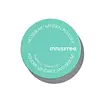What's inside
What's inside
 Key Ingredients
Key Ingredients

 Benefits
Benefits

 Concerns
Concerns

 Ingredients Side-by-side
Ingredients Side-by-side

Silica
AbrasiveAluminum Starch Octenylsuccinate
AbsorbentVinyl Dimethicone/Methicone Silsesquioxane Crosspolymer
Ethylene/Acrylic Acid Copolymer
Emulsion StabilisingMica
Cosmetic ColorantMethicone
Emollient1,2-Hexanediol
Skin ConditioningGlyceryl Caprylate
EmollientHydrogenated Lecithin
EmulsifyingLavandula Angustifolia Water
MaskingButylene Glycol
HumectantRose Flower Oil
MaskingJuniperus Mexicana Oil
MaskingCamellia Sinensis Leaf Extract
AntimicrobialCetearyl Alcohol
EmollientGlyceryl Stearate
EmollientStearic Acid
CleansingAlteromonas Ferment Filtrate
HumectantEthylhexyl Isononanoate
EmollientGossypium Herbaceum Extract
Skin ConditioningPhytosteryl/Isostearyl/Cetyl/Stearyl/Behenyl Dimer Dilinoleate
Skin ConditioningGlycine Soja Sterols
EmollientHydroxypropyl Bispalmitamide Mea
EmollientSodium PCA
HumectantMeadowfoam Estolide
Skin ConditioningSodium Lactate
BufferingLecithin
EmollientCeramide NP
Skin ConditioningCetearyl Glucoside
EmulsifyingHydrogenated Polydecene
EmollientArginine
MaskingHydroxyethyl Urea
HumectantAspartic Acid
MaskingPCA
HumectantGlycosphingolipids
EmollientGlyceryl Citrate/Lactate/Linoleate/Oleate
EmulsifyingCeteareth-20
CleansingButyrospermum Parkii Butter
Skin ConditioningGlycine
BufferingAlanine
MaskingSerine
MaskingValine
MaskingDipotassium Glycyrrhizate
HumectantIsoleucine
Skin ConditioningThreonine
Proline
Skin ConditioningPhenylalanine
MaskingHistidine
HumectantCeramide AP
Skin ConditioningTocopheryl Acetate
AntioxidantSilica, Aluminum Starch Octenylsuccinate, Vinyl Dimethicone/Methicone Silsesquioxane Crosspolymer, Ethylene/Acrylic Acid Copolymer, Mica, Methicone, 1,2-Hexanediol, Glyceryl Caprylate, Hydrogenated Lecithin, Lavandula Angustifolia Water, Butylene Glycol, Rose Flower Oil, Juniperus Mexicana Oil, Camellia Sinensis Leaf Extract, Cetearyl Alcohol, Glyceryl Stearate, Stearic Acid, Alteromonas Ferment Filtrate, Ethylhexyl Isononanoate, Gossypium Herbaceum Extract, Phytosteryl/Isostearyl/Cetyl/Stearyl/Behenyl Dimer Dilinoleate, Glycine Soja Sterols, Hydroxypropyl Bispalmitamide Mea, Sodium PCA, Meadowfoam Estolide, Sodium Lactate, Lecithin, Ceramide NP, Cetearyl Glucoside, Hydrogenated Polydecene, Arginine, Hydroxyethyl Urea, Aspartic Acid, PCA, Glycosphingolipids, Glyceryl Citrate/Lactate/Linoleate/Oleate, Ceteareth-20, Butyrospermum Parkii Butter, Glycine, Alanine, Serine, Valine, Dipotassium Glycyrrhizate, Isoleucine, Threonine, Proline, Phenylalanine, Histidine, Ceramide AP, Tocopheryl Acetate
 Reviews
Reviews

Ingredients Explained
These ingredients are found in both products.
Ingredients higher up in an ingredient list are typically present in a larger amount.
Aluminum Starch Octenylsuccinate is a synthetic powder used as an absorbent, thickener, and anti-caking agent.
As an absorbent, it is great at mattifying skin by soaking up the oil. This is why you'll find it in a range of products from makeup to moisturizers.
This ingredient is considered a modified starch. Starch can also be found naturally in plants.
One study from 1991 found that 5% of this ingredient enhanced titanium dioxide SPF by as much as 40%. The study found 1% titanium dioxide had a 5.6 SPF and adding 5% of aluminum starch octenylsuccinate boosted it to an SPF of 8.1
Although “aluminum” in an ingredient name can raise red flags for some consumers, the form and usage context matter significantly. For typical topical applications, there is no substantial evidence of health risks - such as cancer, neurotoxicity, or systemic “aluminum overload.”
Learn more about Aluminum Starch OctenylsuccinateGlyceryl Caprylate comes from glycerin and caprylic acid, a fatty acid from coconut. It has emollient and emulsifier properties.
As an emollient, it helps hydrate your skin. Emollients work by creating a barrier on your skin to trap moisture in, helping to keep your skin soft and smooth.
On the other hand, emulsifiers prevent ingredients (such as oil and water) from separating.
Learn more about Glyceryl CaprylateMethicone is a type of silicone and is a simpler form of dimethicone.
Silicones are used to enhance the texture of products and have emollient properties. Methicone is used to give products a silky texture and improves spreadability.
Mica is a naturally occurring mineral used to add shimmer and color in cosmetics. It can also help improve the texture of a product or give it an opaque, white/silver color.
Serecite is the name for very fine but ragged grains of mica.
This ingredient is often coated with metal oxides like titanium dioxide. Trace amounts of heavy metals may be found in mica, but these metals are not harmful in our personal products.
Mica has been used since prehistoric times throughout the world. Ancient Egyptian, Indian, Greek, Roman, Aztec, and Chinese civilizations have used mica.
Learn more about MicaSilica, also known as silicon dioxide, is a naturally occurring mineral. It is used as a fine, spherical, and porous powder in cosmetics.
Though it has exfoliant properties, the function of silica varies depending on the product.
The unique structure of silica enhances the spreadability and adds smoothness, making it a great texture enhancer.
It is also used as an active carrier, emulsifier, and mattifier due to its ability to absorb excess oil.
In some products, tiny microneedles called spicules are made from silica or hydrolyzed sponge. When you rub them in, they lightly polish away dead skin layers and enhance the penetration of active ingredients.
Learn more about Silica